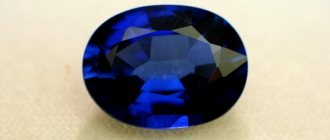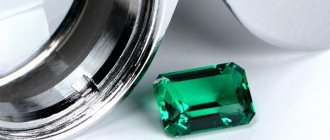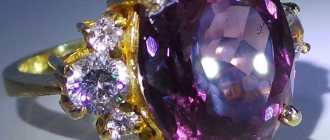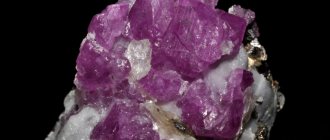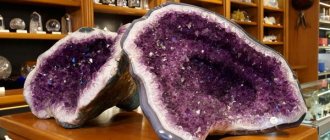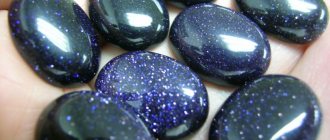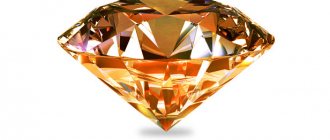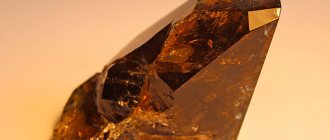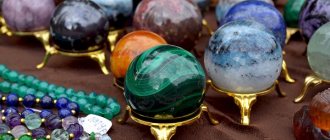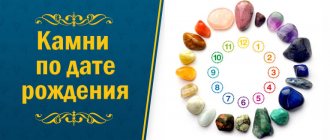Hydrothermal rocks are rocks that are artificially grown in a laboratory. Such minerals are mistakenly considered fake. If the standards and rules of the technological process are observed, a crystal appears that completely matches the natural one in physical and chemical properties. Specialists achieve the same characteristics in color, transparency, gloss, hardness, structure, and density. Thus, hydrothermal stone is an accelerated repetition of what nature created.
Modern science penetrates into our lives, touching different areas, not leaving aside the art of jewelry. Considering that the natural deposits of the earth are being depleted, the cultivation of precious and semi-precious stones using innovative approaches is becoming more and more popular every year.
In 1888, scientists Perret and Hautfel obtained the first gem identical to natural, the technology was improved, and years later German jewelers managed to grow synthetic red corundum. The time period for the creation of hydrothermal stone passes much faster, on average it takes one to two months, whereas it takes millions of years for natural stone to appear.
About hydrothermal crystals
Historical reference
People have long tried to learn how to make precious stones, but until the 19th century, all attempts ended in failure. In 1891, the Frenchman Auguste Verneuil grew the first artificial ruby in his laboratory. The scientist worked on his method for 5 years. A year later, he established mass production of minerals. Verneuil produced several tons of crystals, which were called “Geneva rubies.”
In the 60-80s of the 20th century, artificial gems became very popular in the USSR. People actively purchased jewelry with artificial rubies, sapphires and corundums that changed color.
Hydrothermal minerals have all the properties of natural gems. Their optical, chemical and physical structure is the same. They look the same in jewelry.
Differences from natural gems
Hydrothermal stone differs from natural stone only in origin. Even a jeweler will not be able to distinguish it without special equipment. The advantages of artificial gems are low price, perfect clarity and cut. The main disadvantage is that such rubies, sapphires and emeralds are not exclusive. Modern technologies make it possible to grow any stone according to specified parameters.
Materials used
It is important to distinguish between the concepts of “hydrothermal” and “synthetic” stones. In the first case, gems are obtained from mineral crumbs under the influence of high temperatures, and in the second, dissolved minerals are used, which crystallize in laboratory conditions. In both cases, only natural raw materials are used.
Products that are identical in properties to natural stones are called nanocrystals.
Hydrothermal stones are not imitations of natural gems, and on the tags of jewelry with such inserts, the origin of the crystal is always indicated, denoted by the letters “gt.”
Comparison with natural
It is impossible to determine the differences by appearance; only a professional jeweler, using a microscope, will be able to distinguish a hydrothermal mineral from a natural one.
Emeralds, sapphires, rubies, amethysts are the most popular and sought-after synthesized stones:
- the grown emerald is completely identical to the natural one, the production process takes no more than one month, has a glass luster, repeats all shades of green, does not contain cracks, therefore is more durable, resistant to temperature influences
- sapphires and rubies are widely used in jewelry and do not differ from natural corundum
- Amethyst is a popular type of synthetic rock crystal, famous for its color, transparency, absence of defects and irregularities
You may also be interested in: Soy milk - what is it and how is it served?
Hydrothermal treatment
Upgrading Low-Grade Stones
The hydrothermal method is also used to improve the quality characteristics of natural minerals. It allows you to improve their color, hardness, density and create the desired purity of light refraction.
An ennobled crystal cannot be considered natural; the documents must indicate that it has been processed.
Speed of "maturation"
The hydrothermal method imitates the natural conditions in which the stone is grown, but it speeds up all the processes. If in the natural environment a gem is formed in 1-2 ml of years, in the laboratory it will be grown in 4 weeks.
This is how sapphires, rubies, emeralds, quartz, corundums, spinel, garnet (gadolinium gallium), morganite are obtained... Standing apart from this list are cubic zirconias, crystals that have no analogues in nature.
The process of creating a stone occurs by heating the raw material (up to 6000 degrees) and cooling the sides of the gem with ice water. It is important to control the growth rate of the crystal, otherwise it will become deformed. It is slowed down due to the pressure in the chamber, temperature and concentration of the supplied solution.
Production
There are five melting methods (their detailed descriptions are not disclosed, this is a trade secret):
- Czochralski;
- Garnissage;
- Verneuil;
- Stepanova;
- Bagdasarova.
There are two methods. To create alexandrites, sapphires, and rubies with emeralds, synthesis from aqueous solutions (low temperature) is used. Opals and malachite are grown using the Flux method.
Care
Hydrothermal minerals require the same careful handling as natural ones. Jewelry should be stored in separate boxes and removed before showering and cosmetic procedures. They must be washed every month with a lukewarm soapy solution. Then polish with a suede flap.
Production technology and main differences from natural stones
Hydrothermal production technology involves the crystallization of substances from aqueous solutions at high temperatures and under high pressure. This method allows you to create crystals that are very difficult or completely impossible to make in other ways. At a temperature of 700 ⁰C and a pressure of up to 3000 atmospheres, salt aqueous solutions have the ability to dissolve crystalline compounds.
For the hydrothermal production of beryl, corundum and alexandrite, special vessels made of durable steel are used. They are called autoclaves and are able to withstand critical temperatures and pressures. To grow some crystals, the walls of the autoclave must be subjected to flaw detection before the start of each growth process. If this is not done, damage to the vessel may lead to an explosion.
The hydrothermal process for creating jewelry works as follows:
- At the bottom of the vessel, which is heated from below and cooled from above, a soluble substance is placed, which is called the charge. Quite common precious and semi-precious minerals, such as beryl, are often used as a charge.
- Then the salt part of the solution (mineralizer) is added to the autoclave.
- At the top of the vessel, seed plates are installed, made from the stone that they want to grow. Crystals grow on these plates.
- A diaphragm is placed in the center of the autoclave, which is a steel plate with holes. It allows you to separate zones with low and high temperatures.
Hydrothermal minerals are in no way inferior in quality to natural crystals and even very often surpass them - they have greater brightness and purity. It is quite rare in nature to find stones that are completely free of defects, but synthetic samples are ideal.
It should be said that the chemical, physical and optical structure of jewelry grown hydrothermally does not differ from its natural counterpart. The main difference between this jewelry material is its fairly low cost.
Hydrothermal sapphires: what are they?
Characteristics
The stone has an amazing blue color, is rare in nature and its price is very high. Scientists have long wanted to get an analogue. Nowadays it is grown by heating natural raw materials to high temperatures and dyeing them.
Sapphire of artificial origin is identical to natural sapphire in all characteristics. Nanosapphires are made from corundum. Hydrothermal sapphire, unlike natural analogues, does not have impurities, bubbles, or cracks, and its color is more saturated and durable (does not fade in the sun).
Which sapphire to choose, artificial or natural, depends on your personal preferences and the “thickness” of your wallet. Natural minerals cost 10 times more.
Processed stones
It is important to distinguish between diffusion and declassed sapphires. In the first case, a low-quality mineral was subjected to diffusion treatment to improve characteristics. A declassed stone is a natural sapphire of low quality (cloudy), which was left in its original form. Interestingly, such jewelry will cost more than jewelry with treated sapphire.
Reading the tag correctly
The jewelry label contains all the information about the stones. First, a number is set that indicates the number of crystals. Next, indicate the name of the mineral: “Sp.” (if the sapphire is natural), “Sp.ob.” (processed) or “Sp.cor.” or “Sp.gt.” (this means hydrothermal stone in a frame). Then the cut shape and crystal characteristics (weight, color and clarity) are indicated.
A product with hydrothermal gems is an alternative to natural sapphires, and not their imitation. A fake is a piece of jewelry where an artificial stone is passed off as real. Here the buyer is provided with all the information.
A full description of blue gems is given in the article “Properties of sapphire stone and who it is suitable for.”
Application
Jewelers prefer working with hydrothermal stones over natural ones, since it is difficult to find a gem without flaws, inclusions, small cracks, which complicate the processing process, narrow the possibilities of cutting, and it is even more difficult to find the right size and color.
Synthesized minerals successfully inlay gold and silver jewelry: earrings, necklaces, rings, rings, tiaras. Used in the manufacture of watches, cufflinks, tie clips, jewelry boxes, and figurines.
Hydrothermal stones are used in the space industry, electronics, medicine, for the creation and production of complex microcircuits and mechanisms.
Nanoemeralds
Scientists have tried unsuccessfully for many years to invent an analogue of the rare green gem. And only recently, during experiments with beryllium silicate, they managed to grow a crystal similar to an emerald.
To do this, silica and alumina are added to the crucible, which react with beryllium, and then everything is immersed in an autoclave, where it gets very hot. The desired shade of artificial emerald is given by chromium and aluminum oxide.
Hydrothermal emeralds are distinguished by the presence of brown impurities and microscopic bubbles. These features are visible only on special equipment.
Nanoemeralds, unlike natural ones, do not fade in the sun. They are more resistant to chipping and cracking. Read more about these minerals in the article “Emerald Stone: How to Choose the Right One.”
Magical and healing properties of natural and synthetic rubies
The natural gem has magical powers. Synthetic ruby is another matter: the magical properties of the crystal are denied by mystics. It is also not worth purchasing for its medicinal properties.
Here's what a real ruby can offer its owner:
- It is considered a stone of love and is given as a gift to loved ones. Strengthens relationships and keeps couples feeling in love.
- He helps people achieve power. Increases the owner’s level of authority and improves his oratory skills.
- Protects against the evil eye and damage, and is able to change color depending on the approaching danger.
Settled water with ruby rejuvenates the skin. Other medicinal qualities that natural ruby is known for:
- increases immunity;
- relieves diseases of the female sphere;
- improves metabolism.
It also helps with paralysis, depression, diseases of the heart system and colds.
Hydrothermal rubies
Mark Gooden created the first hydrothermal ruby by melting a natural stone. Since 1892, they have been grown using the Verneuil method.
Red gems, like emeralds, are obtained using silica, alumina and chromium. They are also made from corundum, similar to sapphires.
Artificial ruby has a number of advantages over natural ruby:
- brighter and more saturated color;
- does not fade in the sun;
- has no defects in form and structure;
- you can get any stone, even an imitation of the famous “cat’s eye”.
Externally, nanoruby is indistinguishable from the real thing and has practically the same chemical and physical characteristics. Natural mineral weighs a little more and may have cracks and chips that can only be discerned with the help of special equipment. These red gems are described in detail in the article “Ruby Stone: Color, Properties and Who is Suitable for It.”
How to distinguish synthetic stone from natural stone
Natural stones are expensive. A refined ruby will cost from 7 thousand rubles to hundreds of thousands of rubles per carat. Against this background, an artificial ruby is much more affordable: the price for 1 carat (in rubles) is from 70 . Sometimes an unscrupulous seller may give the buyer another stone or glass, so one can understand concerns about the naturalness of the purchased stone.
View this post on Instagram
Publication from Discount
